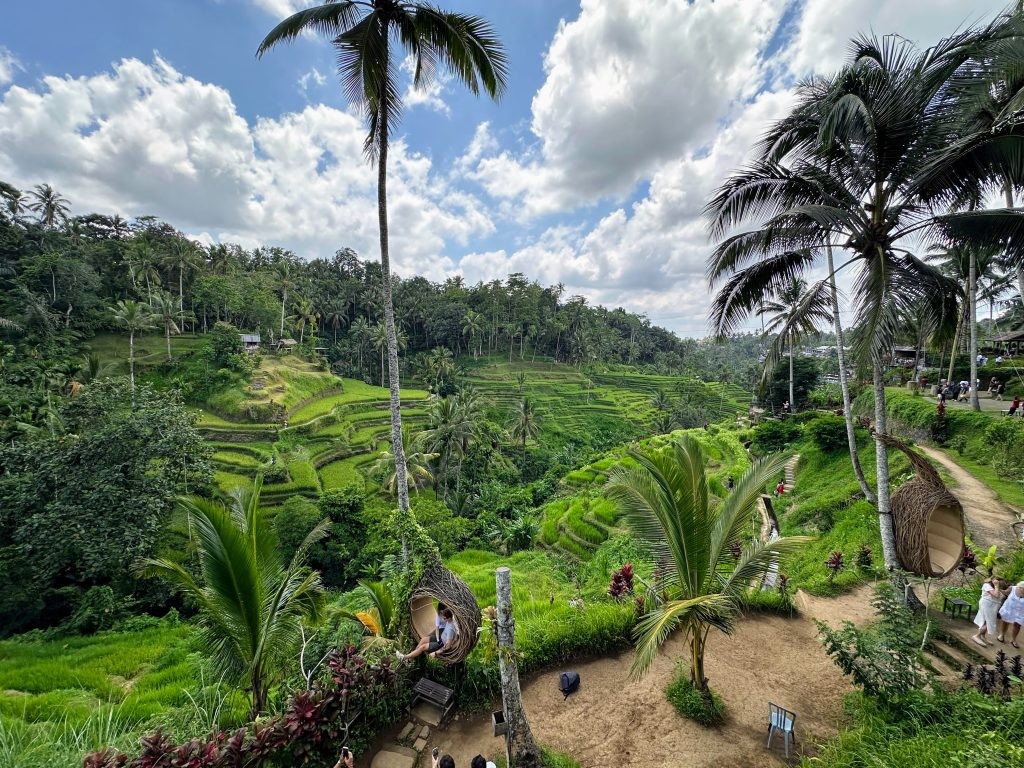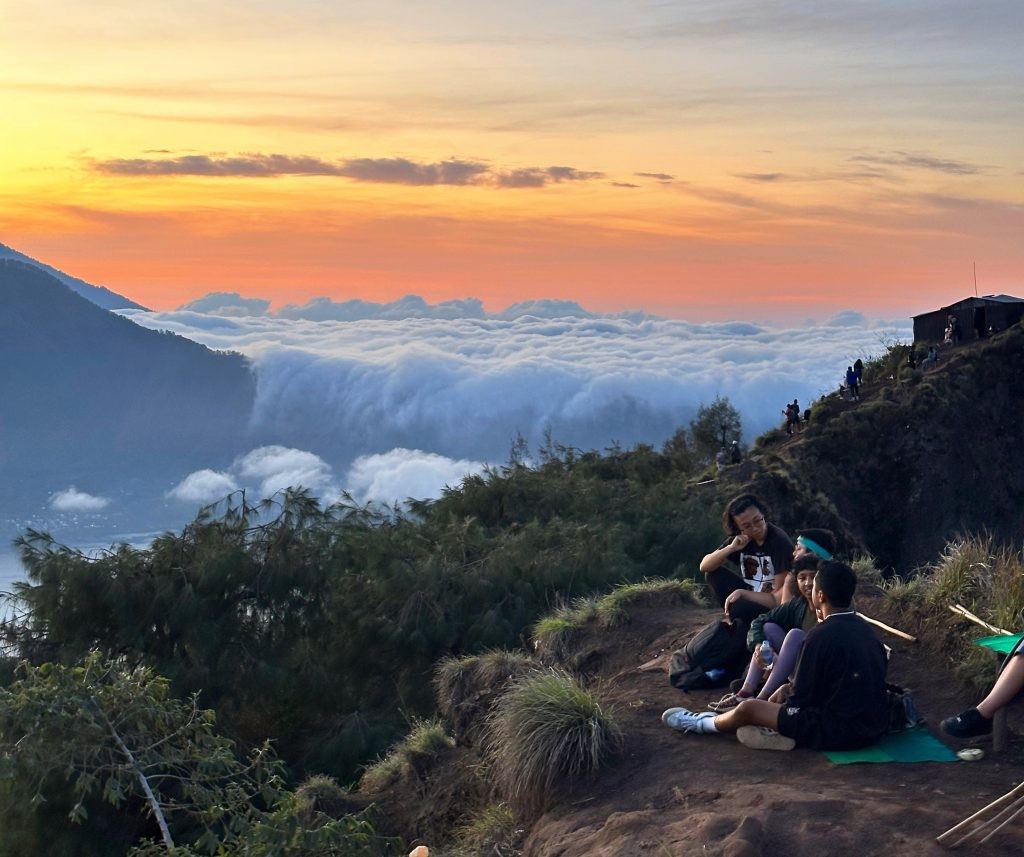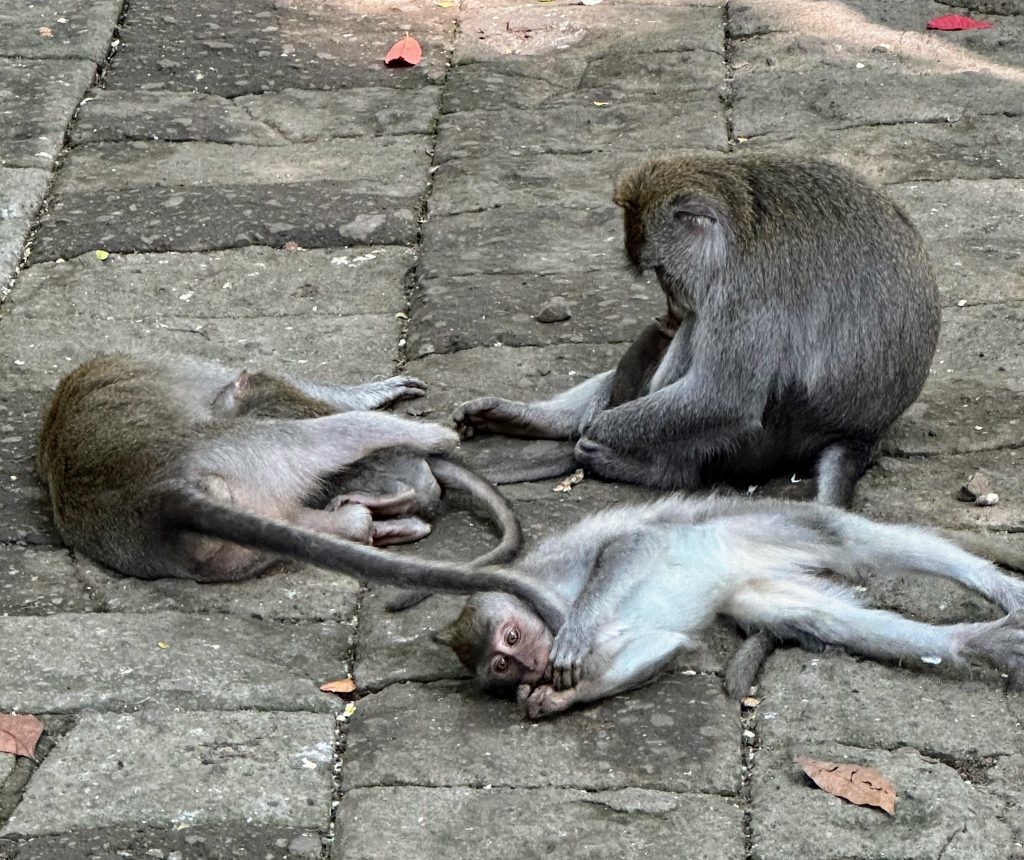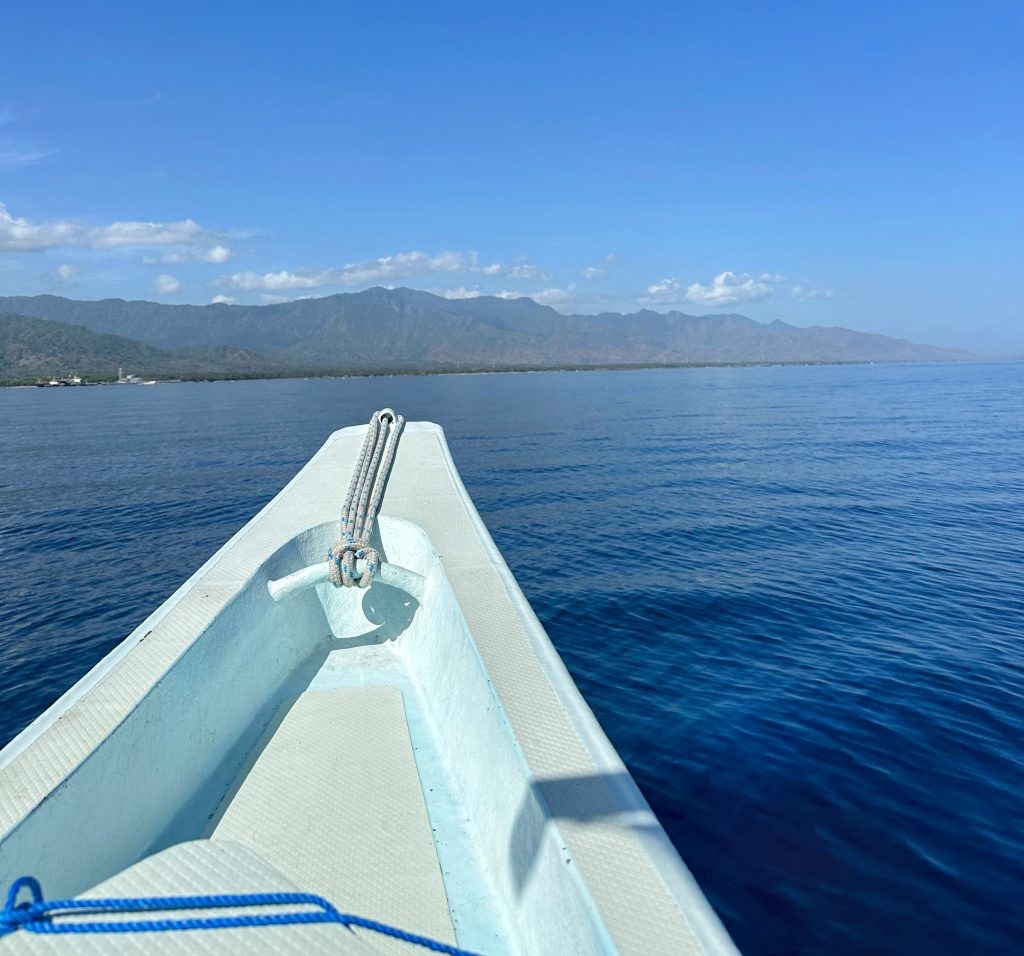Bali Tourism Facts reveal a captivating blend of cultural richness and natural beauty. SIXT.VN is your trusted partner, offering unparalleled access to this Indonesian paradise, ensuring your trip is seamless and unforgettable. Discover Bali’s unique charm and enhance your travel experience with convenient services tailored for you, from airport transfers to curated tours.
1. Are Balinese Ceremonies a Common Occurrence?
Yes, Balinese ceremonies are a deeply ingrained aspect of daily life. With a calendar brimming with sacred days, you’ll find temple celebrations happening constantly across the island. According to the Bali Government Tourism Office, these events, especially Odalan, which marks a temple’s anniversary every 210 days on the Balinese Pawukon calendar, create a vibrant cultural tapestry for visitors to witness. Don’t be surprised if your taxi driver mentions a ceremony as the reason for a road closure; it’s that frequent. Besides the major festivals, daily offerings called Canang Sari are prepared and placed in front of homes, businesses, and temples, showcasing the Balinese devotion to their spiritual practices.
Here are some significant Balinese ceremonies:
| Ceremony Title | Celebrated On | Description |
|---|---|---|
| Nyepi (Day of Silence) | March 29, 2025 (210-day cycle) | The Balinese New Year marked by complete silence, reflection, and meditation. Tourist destinations and the airport are closed. |
| Ogoh-Ogoh Parade | March 28, 2025 (Nyepi Eve) | A parade featuring large, demonic statues (Ogoh-Ogoh) burned to drive away evil spirits, held the night before Nyepi. |
| Galungan and Kuningan | Sept 3 & 13, 2025 (210-day cycle) | Celebrated every 210 days, these ceremonies symbolize the victory of good over evil. Homes and temples are adorned with Penjor. |
| Melasti | March 26, 2025 (210-day cycle) | A purification ceremony where sacred objects are taken to the sea for cleansing, symbolizing spiritual renewal. |
These ceremonies provide a deep insight into Balinese culture and spirituality.
2. How Early Do Balinese People Start Participating in Ceremonies?
Balinese people engage in ceremonies from birth, with traditions commencing on the very first day of life. The Grounding Ceremony, also known as Nyabutan or Kepus Puser, observes that babies are not allowed to touch the ground for the first 105 days, as stated by cultural anthropologist Dr. I Gusti Ngurah Bagus. Babies are believed to be in a divine state, connected to the heavens and not fully part of the human world. This practice underscores the spiritual reverence and protective care given to newborns in Balinese culture. In essence, Balinese children are experts at avoiding touching the ground.
Here are some key ceremonies in a Balinese baby’s first year:
Placenta Burial (Ari-Ari Ritual)
The placenta, called Ari-Ari, is regarded as a sacred companion to the baby. After birth, it is carefully cleaned and buried near the family home, symbolizing a spiritual connection and protection for the child throughout their life. This ritual highlights the deep spiritual beliefs tied to the natural processes of birth.
Naming Ceremony (Upacara Nama)
Balinese babies receive their names through a naming ceremony, usually held after the 42nd day. The family chooses the name based on traditions reflecting the baby’s birth order and family heritage. Names often follow a pattern: Wayan or Putu for the first child, Made or Kadek for the second, Nyoman or Komang for the third, and Ketut for the fourth. These naming conventions reflect the importance of family lineage and birth order in Balinese society.
The Baby’s Guardians (Kala and Sanghyang Jaran)
Balinese believe that certain spirits protect babies. Kala is thought to guard children from harm, while Sanghyang Jaran is a divine figure believed to ensure the child’s well-being. Rituals with offerings are performed to honor these spirits, seeking their protection for the newborn. These protective spirits represent the deep-seated spiritual beliefs that aim to safeguard children.
105-Day Celebration (Three-Month Ceremony)
At the 105-day mark (the “three-month” ceremony), a celebration called Telung Bulanan is held. The baby is introduced to the extended family, community, and ancestors, marking the beginning of the baby’s integration into society. At this point, the baby can finally touch the ground, symbolizing their full entry into the human world.
 A tranquil scene of Tegalalang Rice Terraces in Bali, featuring tiered green fields and winding pathways, captured during the golden hour.
A tranquil scene of Tegalalang Rice Terraces in Bali, featuring tiered green fields and winding pathways, captured during the golden hour.
3. What is Bali’s Sole UNESCO World Heritage Site?
Bali’s only UNESCO World Heritage Site is the Subak Irrigation System. Its official name, “Cultural Landscape of Bali Province: the Subak System as a Manifestation of the Tri Hita Karana Philosophy,” signifies an ancient, community-based water management system used in rice terraces. According to UNESCO, the Subak system was recognized in 2012 for its sustainability and community-based water management, embodying the Balinese philosophy of Tri Hita Karana, which emphasizes harmony between humans, nature, and the spiritual world. Famous rice terraces like the Tegalalang Rice Terraces are a popular tourist attraction, showcasing this ingenious system.
The Subak system is not only an agricultural technique but also a cultural and spiritual practice. The water management is deeply rooted in the Tri Hita Karana philosophy, ensuring balance and harmony in all aspects of life. This philosophy is reflected in the social organization of the farmers, the rituals performed, and the sustainable use of natural resources. The Subak system demonstrates how traditional practices can be both effective and environmentally responsible.
4. How Devastating Was Mount Agung’s Last Eruption?
Mount Agung is an active volcano that continues to pose a threat to communities in Bali. The most recent major eruption occurred in 1963, lasting 11 months and resulting in over 1,000 deaths. Despite its danger, the volcano is considered sacred and is home to many temples. According to the Volcanology and Geological Disaster Mitigation Center (PVMBG) of Indonesia, Mount Agung remains under constant monitoring due to its potential for future eruptions.
Bali’s active volcanoes are responsible for the famous black sand beaches that attract tourists each year. Mount Batur is another well-known volcano, having erupted over 20 times in the last two centuries. At the peak of Mount Batur lies Lake Batur, a large volcanic lake formed in the massive crater left behind by a past eruption.
 Tourists enjoying the breathtaking sunrise view from Mount Batur, with a sea of clouds rolling below.
Tourists enjoying the breathtaking sunrise view from Mount Batur, with a sea of clouds rolling below.
When visiting volcanic areas, be mindful of the local environment and heed any warnings or advice from local authorities. Many tours offer guided hikes to these volcanoes, providing a safe and informative experience. Additionally, always secure your belongings, as monkeys are known to be mischievous and may attempt to snatch items like sunglasses or food.
5. Does Bali Possess Its Own Distinct Language?
Yes, Bali has its own language called Balinese, or Basa Bali. Despite being a small island in Indonesia, Bali has preserved its unique language due to its Hindu population and isolated history. While most Balinese people can speak Bahasa Indonesia, Basa Bali features distinct vocabulary and lexicon, according to linguist Dr. Wayan Arka. This linguistic diversity enriches Bali’s cultural landscape and reflects its unique heritage.
The Balinese language is not only a means of communication but also a carrier of cultural identity. It is used in traditional ceremonies, performing arts, and daily life. The language has different registers, reflecting social hierarchies and levels of formality. Preserving and promoting the Balinese language is essential for maintaining Bali’s cultural heritage and ensuring its continuity for future generations.
6. Why Are Monkeys Considered Sacred in Bali?
Monkeys, particularly macaques, are sacred animals in Bali due to their connection with Balinese Hinduism. They are closely associated with the Hindu monkey god, Hanuman, who rescued his wife from the demon king Ravana. Monkeys are considered companions of Hanuman and guardians of sacred temples. According to religious scholar Professor I Ketut Surajaya, this reverence for monkeys stems from their symbolic role in Hindu mythology and their presence in sacred sites.
The most famous monkey sanctuary in Bali is the Ubud Monkey Forest, home to over 700 macaques. These monkeys are accustomed to tourists but can be mischievous, so it’s wise to secure your belongings, especially sunglasses. The Ubud Monkey Forest serves not only as a sanctuary but also as a research site for studying primate behavior. Visitors can observe the monkeys in their natural habitat and learn about their social dynamics and interactions.
 A charming scene of macaques in Bali, one holding a playful baby, surrounded by lush greenery.
A charming scene of macaques in Bali, one holding a playful baby, surrounded by lush greenery.
7. How Significant Is Bali in Indonesia’s Tourism Sector?
Bali is incredibly significant, making up 40% of all monthly tourist visits to Indonesia. Despite being one of nearly 18,000 islands in Indonesia and comprising only 1.7% of the country’s population, Bali attracts a substantial number of international tourists each year. According to data from the Indonesian Ministry of Tourism and Creative Economy, Bali’s tourism sector is a major contributor to the national economy, drawing millions of visitors annually.
Bali’s popularity as a tourist destination has grown over the years. From its humble beginnings as a challenging destination for foreign visitors in the late 19th century to its current status as a world-renowned paradise, Bali has undergone significant transformations. The island’s unique blend of natural beauty, cultural richness, and warm hospitality has made it a favorite among travelers from around the globe.
Let’s explore a brief history of tourism in Bali:
Before the 1900s: Difficult Travel
In the late 19th century, Bali was ruled by local kings, making travel slow and bureaucratic. Foreign visitors needed permission from multiple rulers, rendering Bali an exclusive and challenging destination. This exclusivity contributed to Bali’s mystique and appeal.
1910s-1920s: Opening to Foreigners
In the early 1900s, Bali became more accessible, especially to Dutch expatriates. The first tourists arrived in the 1920s, staying in resorts like the Bali Hotel, which attracted world leaders like Queen Elizabeth. Bali’s infrastructure improved under Dutch influence, preparing it for increased tourism. These improvements laid the foundation for Bali’s future as a tourist hotspot.
1940s: The Japanese Occupation
During World War II, Japan occupied Bali and the rest of the Dutch East Indies in 1942. This occupation disrupted tourism while setting the stage for Indonesian independence after the war. The occupation marked a significant turning point in Bali’s history.
1960s: Post-Independence Tourism Revival
In the 1960s, after Indonesia gained independence, Bali’s tourism revived under President Sukarno, who developed Bali’s first high-rise hotel and expanded the airport. By 1968, Bali was welcoming 11,000 tourists annually. This revival set the stage for Bali’s growth as a major tourist destination.
1970s-1980s: The Hippie Era
During the 1970s, Bali became popular with hippies and backpackers, shaping its image as an alternative, relaxed destination. The local government encouraged cultural tourism to preserve traditions, and tourism numbers grew steadily. This era cemented Bali’s reputation as a laid-back, culturally rich destination.
2002-2005: The Bali Bombings
The tourism boom was interrupted by the tragic Bali bombings in 2002 and 2005, targeting tourist areas in Kuta. The attacks killed hundreds and caused a sharp decline in tourism, with many visitors canceling their trips. Despite this setback, Bali demonstrated resilience and worked to restore its image as a safe and welcoming destination.
2010s: A Surge in Tourism
In the 2010s, Bali’s tourism exploded, with over 6 million international visitors annually, making up about 40% of Indonesia’s monthly tourism. Rapid development, however, led to environmental concerns like water shortages and plastic waste. This surge in tourism brought both economic benefits and environmental challenges.
2020-2021: The Impact of Covid-19
The Covid-19 pandemic brought Bali’s tourism industry to a standstill. In 2021, fewer than 50 international tourists visited the island due to strict travel restrictions. This unprecedented crisis highlighted the vulnerability of Bali’s economy to external shocks.
2024: Bali’s Comeback
By 2024, Bali’s tourism industry has recovered and is on track to reach new record highs in international visitors, solidifying its status as one of the world’s top tourist destinations once again. The recovery reflects Bali’s enduring appeal and the resilience of its tourism sector.
8. Is Bali Part of the Coral Triangle?
Yes, Bali sits in the heart of the Coral Triangle, which houses 76% of the world’s coral species. This makes Bali an ideal destination for diving and snorkeling enthusiasts, according to the Coral Triangle Initiative. The island’s rich marine biodiversity is a significant draw for eco-tourism and conservation efforts.
 A boat gliding through crystal-clear waters towards the coast of Bali, offering dolphin tours with a backdrop of majestic mountains.
A boat gliding through crystal-clear waters towards the coast of Bali, offering dolphin tours with a backdrop of majestic mountains.
The Coral Triangle is a marine biodiversity hotspot, supporting a wide array of marine life, including various species of coral, fish, and invertebrates. Conservation efforts are crucial to protecting this invaluable ecosystem.
9. What is the Significance of Taman Nasional Bali Barat?
Taman Nasional Bali Barat is significant as the only place in the world where you can find the critically endangered Bali Starling (Jalak Bali) in the wild. This makes the national park a crucial area for conservation efforts aimed at protecting this iconic bird species, as noted by the Bali Starling Conservation Project. The park also offers opportunities for hiking, bird watching, and exploring Bali’s natural beauty.
Taman Nasional Bali Barat is a protected area that covers a diverse range of ecosystems, including mangroves, coral reefs, and rainforests. It is home to a variety of wildlife, including deer, monkeys, and various bird species. The park offers visitors the chance to experience Bali’s natural beauty while supporting conservation efforts.
10. What Travel Services Does SIXT.VN Offer for a Bali Trip?
SIXT.VN offers a comprehensive suite of travel services designed to make your Bali trip seamless and unforgettable. We understand the challenges travelers face, such as planning detailed itineraries, overcoming language and cultural barriers, and finding reliable services. Here’s how SIXT.VN can assist you:
- Personalized Itinerary Planning: Our expert travel consultants create custom itineraries tailored to your interests and schedule. Whether you’re interested in cultural immersion, adventure activities, or relaxation, we design a plan that fits your needs.
- Airport Transfers: Enjoy stress-free airport transfers with our reliable and comfortable service. Our drivers ensure you arrive at your destination safely and on time.
- Hotel Bookings: We offer a wide selection of hotels to suit every budget and preference. From luxury resorts to boutique hotels, we help you find the perfect accommodation.
- Tour Bookings: Explore Bali’s iconic landmarks and hidden gems with our expertly guided tours. Our knowledgeable guides provide insights into the local culture and history.
- Flight Bookings: We assist with booking flights, ensuring you get the best prices and convenient schedules.
With SIXT.VN, you can relax and enjoy your Bali vacation, knowing that every detail is taken care of. Our reliable and convenient services ensure a memorable and stress-free travel experience.
Ready to experience Bali? Contact us today and let SIXT.VN take care of all your travel needs.
- Address: 260 Cau Giay, Hanoi, Vietnam
- Hotline/WhatsApp: +84 986 244 358
- Website: SIXT.VN
FAQ About Bali Tourism Facts
-
What makes Balinese ceremonies unique?
Balinese ceremonies are unique because they are deeply integrated into daily life and reflect the island’s rich cultural and spiritual heritage. These ceremonies often involve elaborate rituals, traditional music, and colorful attire, providing a captivating experience for visitors. -
How can tourists respectfully observe Balinese ceremonies?
Tourists can respectfully observe Balinese ceremonies by dressing modestly, maintaining a respectful distance, and following the guidance of local hosts. It’s also important to ask for permission before taking photos and to refrain from disruptive behavior. -
What is the best time to visit Bali to witness specific ceremonies?
The best time to visit Bali to witness specific ceremonies depends on the Balinese calendar. Major events like Nyepi, Galungan, and Kuningan occur on specific dates, while temple anniversaries (Odalan) happen regularly throughout the year. -
How does the Subak irrigation system reflect Balinese philosophy?
The Subak irrigation system reflects the Balinese philosophy of Tri Hita Karana, which emphasizes harmony between humans, nature, and the spiritual world. The system promotes sustainable water management and community cooperation, ensuring balance and prosperity for all. -
What are the risks associated with visiting active volcanoes in Bali?
The risks associated with visiting active volcanoes in Bali include potential eruptions, volcanic ash, and hazardous gases. Visitors should heed warnings from local authorities, follow safety guidelines, and avoid restricted areas. -
Are there any resources available to learn basic Balinese phrases?
Yes, there are many resources available to learn basic Balinese phrases, including language learning apps, online courses, and phrasebooks. Learning a few basic phrases can enhance your interactions with locals and show respect for their culture. -
How can tourists contribute to the conservation of monkeys in Bali?
Tourists can contribute to the conservation of monkeys in Bali by avoiding feeding them, properly disposing of trash, and supporting ethical tourism practices. It’s also important to respect their natural habitat and avoid disruptive behavior. -
What are some sustainable tourism practices in Bali?
Sustainable tourism practices in Bali include supporting local businesses, minimizing waste, conserving water and energy, and respecting cultural traditions. Tourists can also choose eco-friendly accommodations and tours that prioritize environmental conservation. -
What measures are being taken to address environmental concerns related to tourism in Bali?
Measures being taken to address environmental concerns related to tourism in Bali include promoting sustainable development, improving waste management, conserving water resources, and raising awareness among tourists and locals. -
How can SIXT.VN enhance my travel experience in Bali?
SIXT.VN can enhance your travel experience in Bali by providing personalized itinerary planning, reliable airport transfers, hotel bookings, tour bookings, and flight bookings. Our comprehensive services ensure a seamless and unforgettable vacation.



